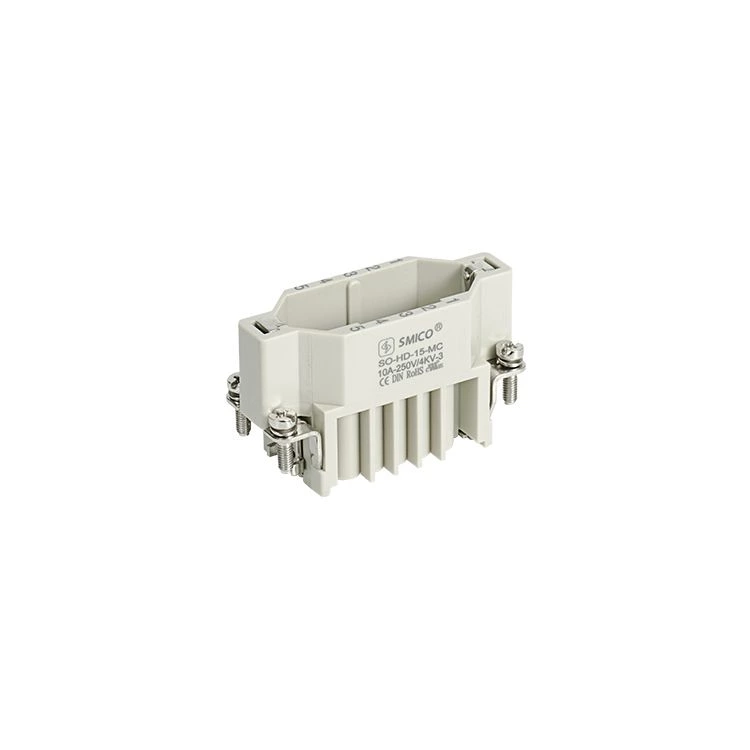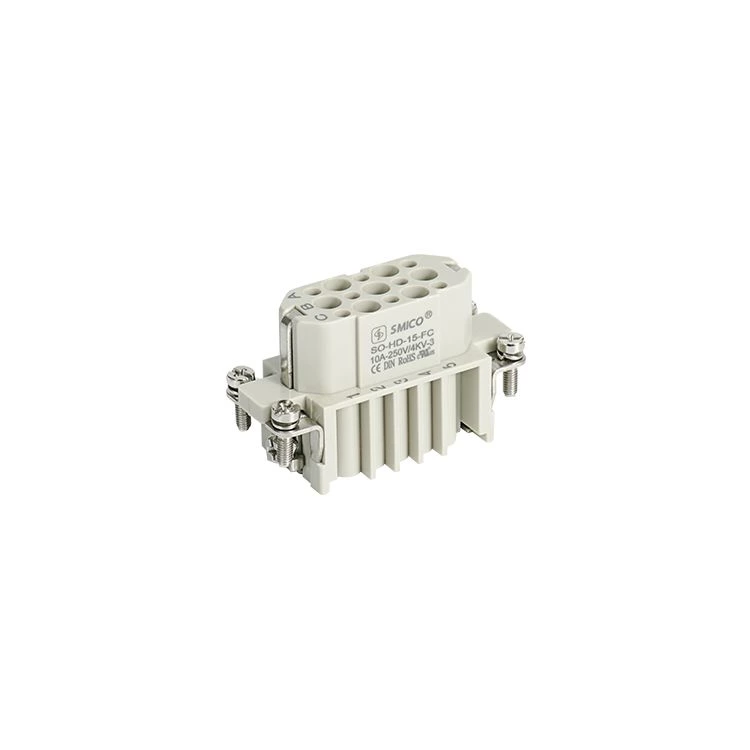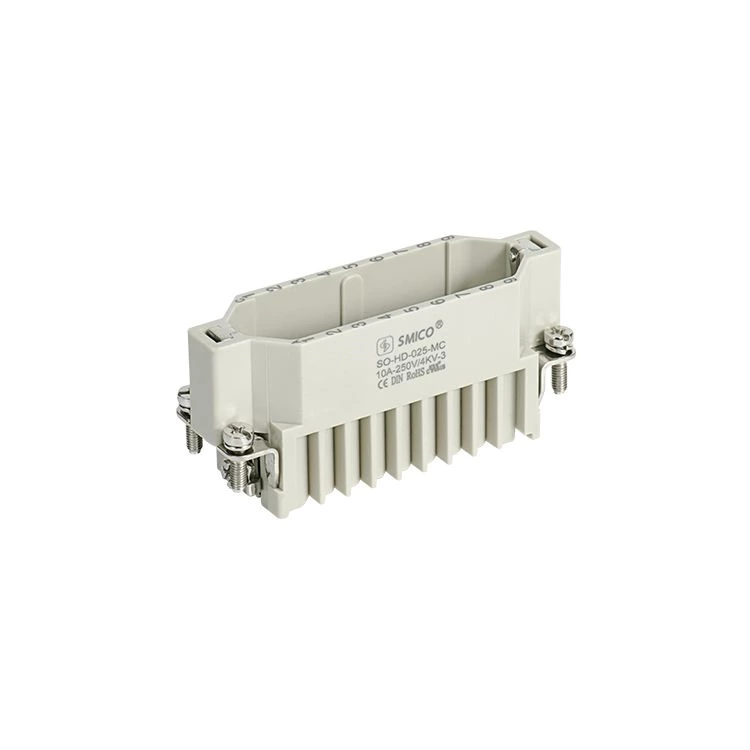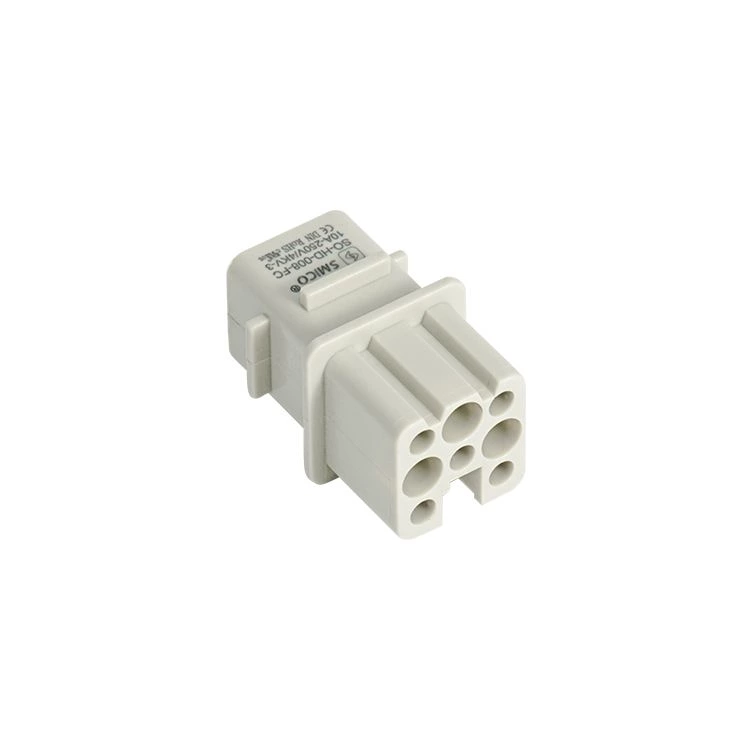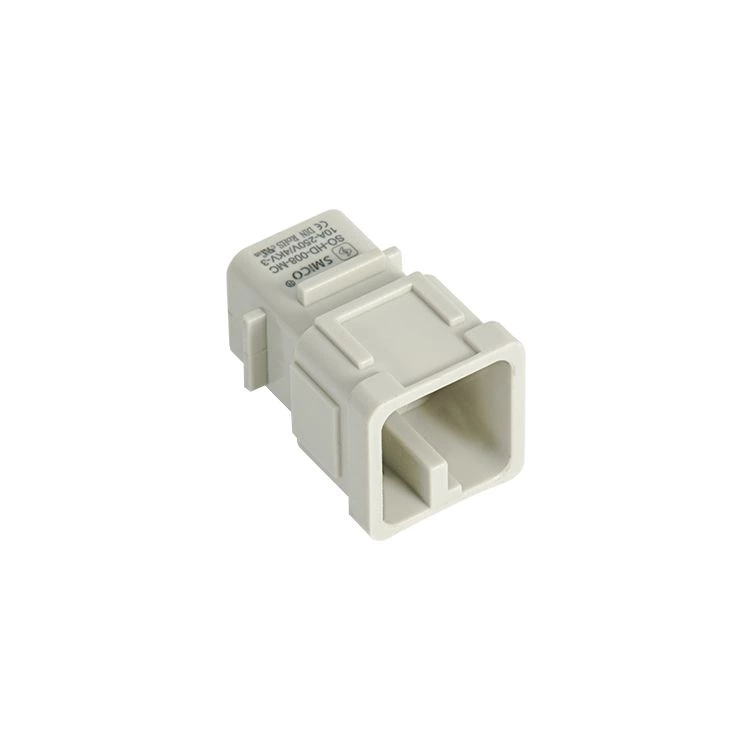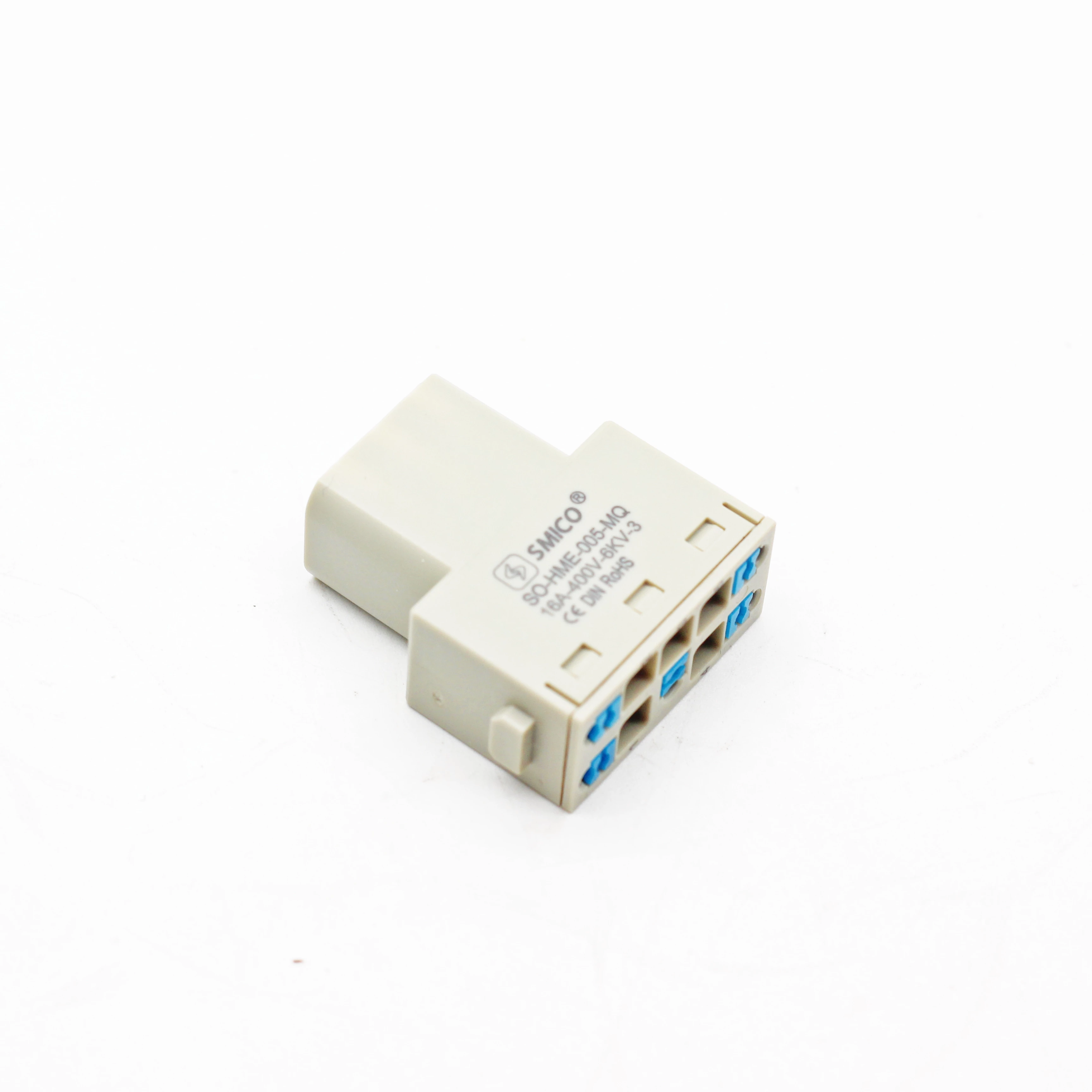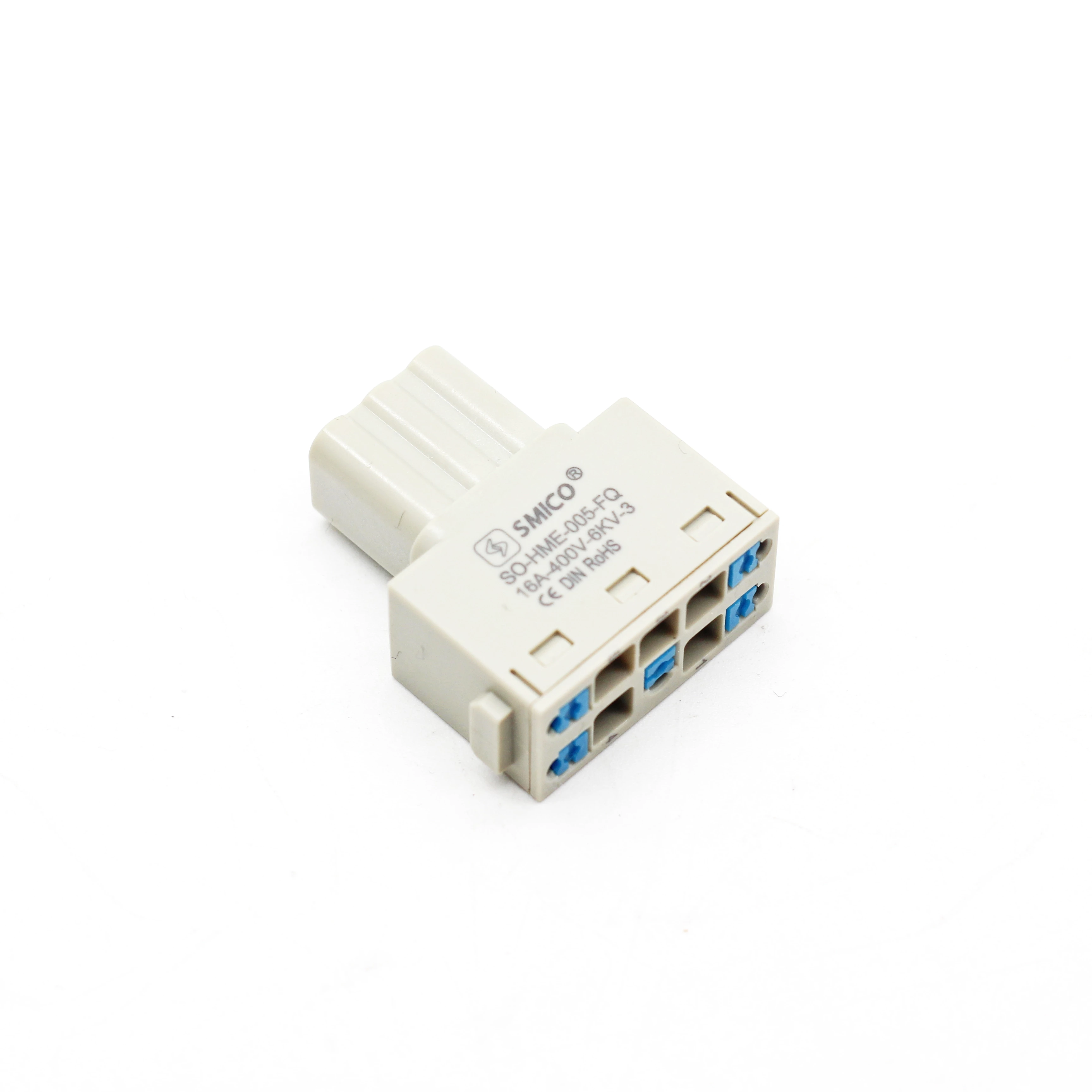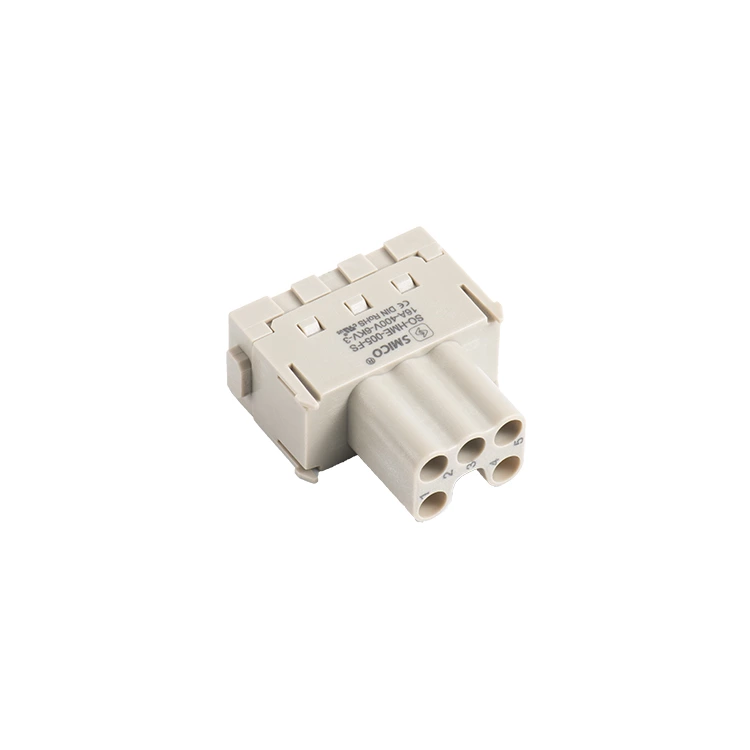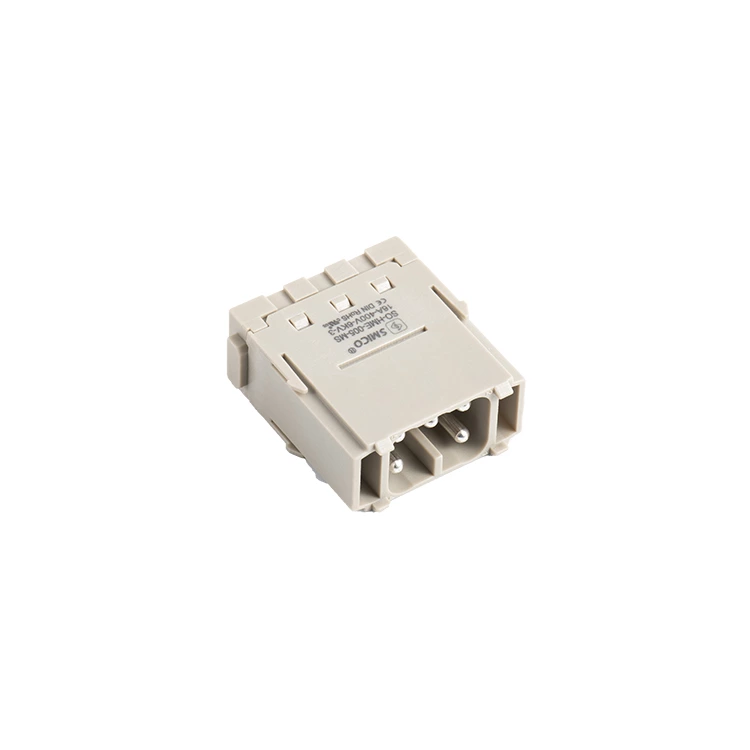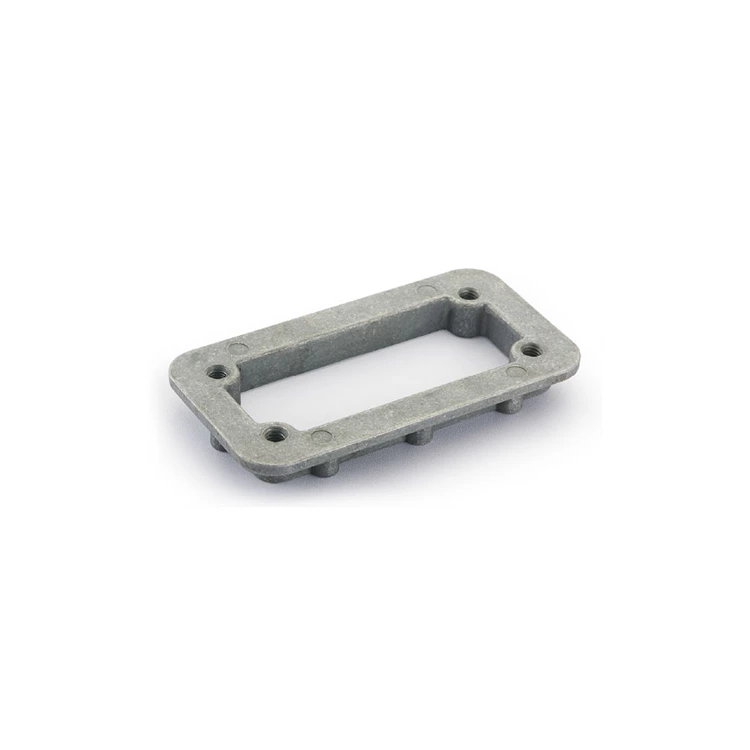Manufacturing Process Of Heavy-duty Connectors
There are many types of Heavy Duty Connector, including round plug-ins, rectangular heavy-duty connectors, etc., but the manufacturing process is similar and is generally divided into four stages: stamping, electroplating, spraying, and assembly.
1. The manufacturing process of heavy-duty connectors generally starts with stamping pins. Heavy-duty connectors (pins) are stamped from thin metal strips through large high-speed stamping machines. One end of the large roll of metal strip is fed into the front end of the stamping machine, and the other end passes through the hydraulic workbench of the stamping machine and is wound into the take-up wheel. The take-up wheel pulls out the metal strip and rolls it up to stamp out the finished product.
2. After the heavy-duty connector pins are stamped, they should be sent to the electroplating section. At this stage, the electronic contact surface of the connector will be plated with various metal coatings.
3. The plastic box seat of the heavy-duty connector is made in the injection molding stage. The usual process is to inject the molten plastic into the metal tire membrane and then quickly cool it to form.
4. The final stage of heavy-duty connector manufacturing is the assembly of the finished product. There are two ways to connect the electroplated pins to the injection molded box seat: single plug-in or combined plug-in. Single plug-in means plugging one pin at a time; combined plug-in means plugging multiple pins into the box seat at the same time.
